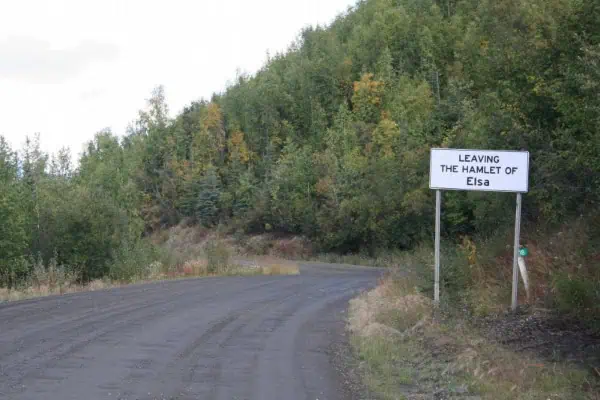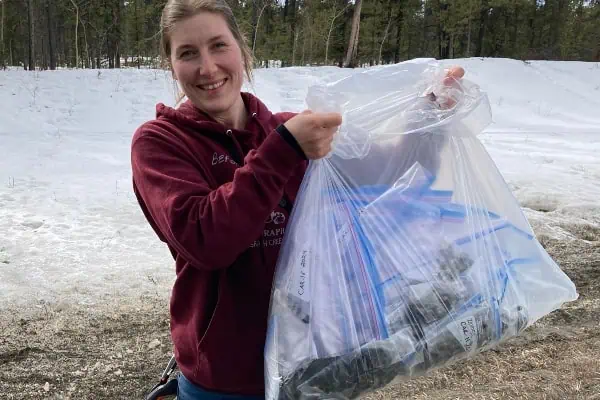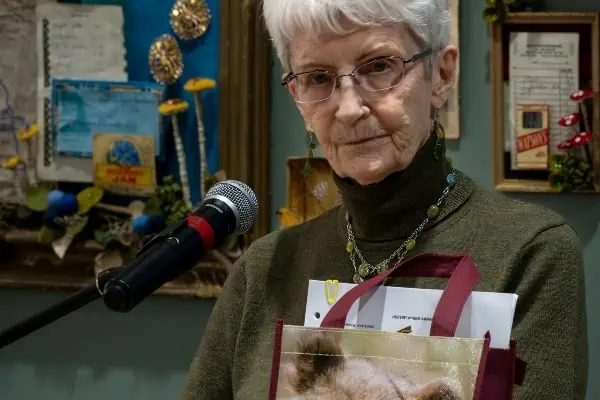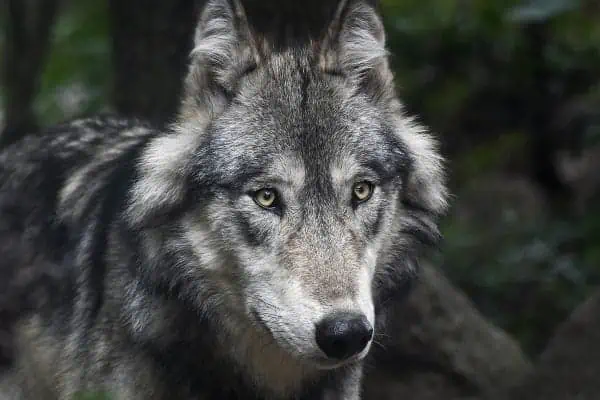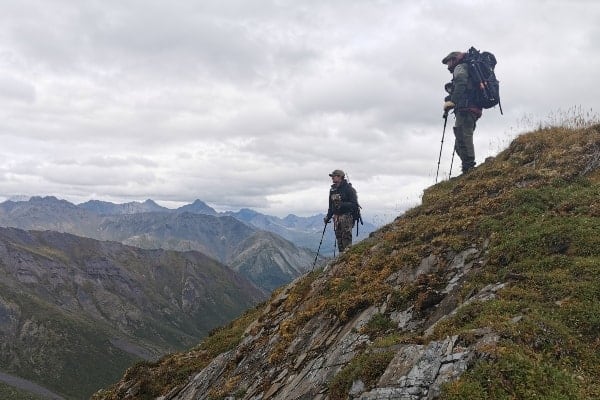
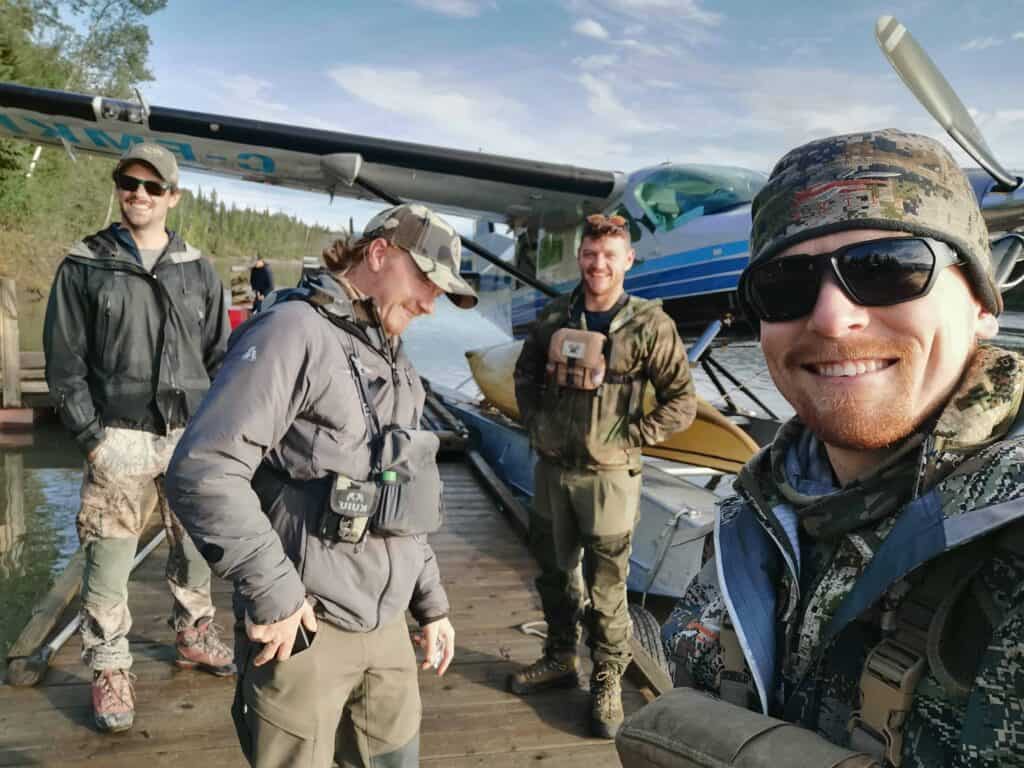
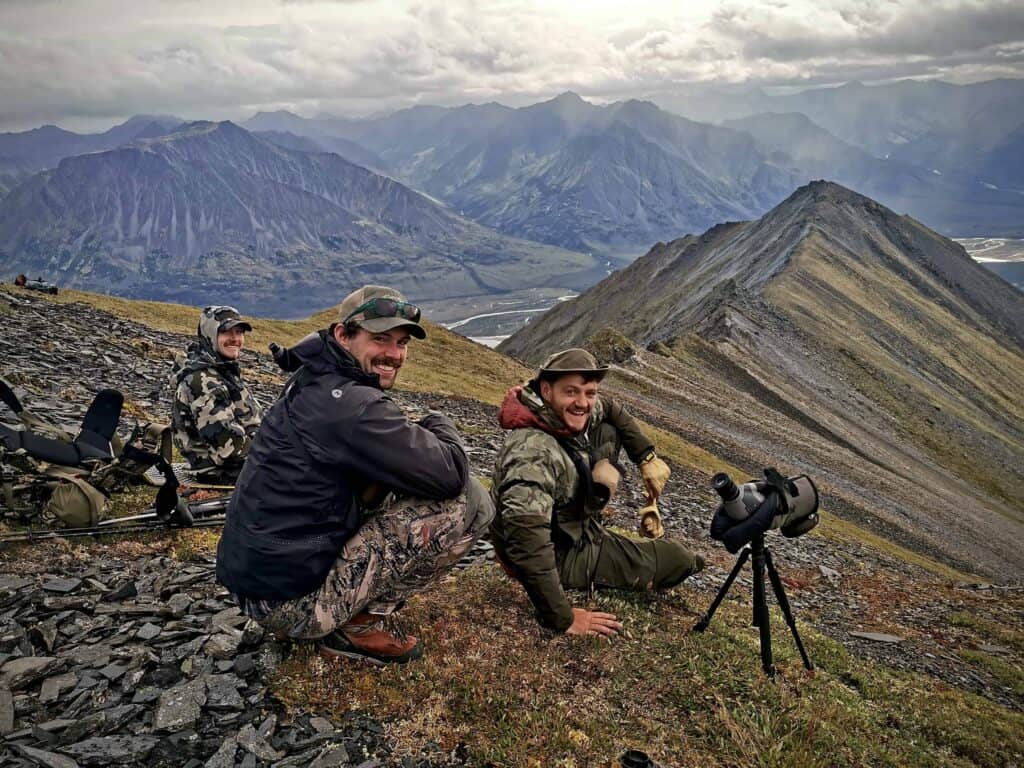
The decision to carry a mature Yukon bull moose, over 5 kilometres through the mountains and on your back, is not one that should be taken lightly.
On August 14 of 2021, I set out with my hunting partners, Steve Hossack, Rory Allen and Sean Mckewen, on what was supposed to be our first fly-in sheep hunt, together, as a team. After getting dropped off at a remote lake, we made quick work of unstrapping the canoe from the floats and began making shuttle runs to the base of the mountain. That afternoon, we made the three-hour hike into the alpine to set up our base camp.
Once camp was set up, low-hanging clouds in the valley began to clear and we were offered our first clear look at the surrounding mountains. None of us had flown to this part of the territory before, and we were all taken aback by the beauty and ruggedness of the giant peaks.
Despite having obsessively studied maps of the area, nothing could have prepared me for what I was looking at. I remember feeling intimidated by the sheer scale of the mountains that we planned to climb, and my inexperience in dealing with this sort of terrain made me uneasy. It was comforting to know that our buddy Sean, while new to hunting at the time, was a highly skilled and experienced mountaineer and was there to help guide our decision making and navigation in the hills.
Any experienced northern hunter knows that it is not uncommon to go days, or sometimes even weeks, without seeing much action. Much to our delight, this would not be the tale of this adventure. Minutes after getting the tents set up, we glassed back down at the lake, where we were dropped off earlier that day, and spotted the big bull moose of a lifetime. Steve, the most experienced moose hunter of our group, ballparked the bull to be somewhere in the high-60/ low-70-inch range—a true Yukon giant. We laughed as we watched the bull walk right over our tracks where we had been dropped off just hours before.
While we were all there to hunt sheep, I’d be lying if I said that spotting the giant bull didn’t have me thinking about changing gears. When you work a full-time job and hunt to fill your freezer, sometimes you’ve got to make the most of the chances you’re given. Despite the fact that the big moose had likely just disappeared out of our lives for good, I couldn’t help but think about where everyone’s head would be at if we crossed paths with him again.
Later that night, Rory and Sean volunteered to make the two-hour round-trip hike down the mountain to the nearest creek, to supply us with a few days’ worth of water. Steve and I seized this opportunity to do more glassing and were thrilled to spot another Yukon giant, this time a large Bonnet Plume caribou.
By the time Rory and Sean made it back to camp, we were happy to report that we had also spotted over 35 ewes and lambs. There were sheep in these hills. The next morning was our first real day of hunting, and while the guys finished eating breakfast, I grabbed my spotting scope and hiked 50 metres down from camp, to do more glassing.
While enjoying a morning coffee, I worked my spotter along the mountain block that we planned to hunt that day. Not five minutes after hitting the glass, I picked up something that I couldn’t believe … not one, but two BIG bull moose! Excluding the bull that we spotted the day before, the larger of the pair was easily the most-impressive moose I had ever seen. I initially mistook him for the giant and rushed back up to camp, to tell the guys.
Once we had more time to study the moose, we realized that the bigger bull was, indeed, a different animal and was a few years younger than the monarch we saw on day 1. Nevertheless, he was an absolute beauty and an extraordinary example of what a big, mature Yukon moose can grow to look like. We watched them for over a half-hour as they grazed on the willow.
As we continued to glass back into the bowl, we spotted our first seven rams of the trip. The male sheep were bedded down just below the summit at the west end of a rocky outcropping. After determining that none of them were legal, we went ahead with our plan to hike up and traverse the east end of the mountain block.
For the next two days we hunted hard and did everything in our power to turn up an old ram. While we hiked and explored, we made sure to keep eyes on the two moose that continued to feed down in the valley below us. As every hour went by where we weren’t spotting “no doubter” rams, I could feel my thoughts slowly drifting back down to the two moose. I contemplated, in silence, as to whether or not it would even be possible for us to go after the big bull.
With the moose just over five kilometres from the nearest access to the lake, I knew that this would be close to the limit of what any sound hunter would ever dare to pack out. We managed to close in to 700 yards on a band of rams, on day 3, but, after watching them for an hour, we determined that none of the sheep were legal. Later that day, we found a slightly older ram tucked up higher in the rocks, but our hopes of pursuing him were put on hold when we were buzzed, multiple times, by a bush plane from the local outfitter who was clearly concerned about us getting too close to the rams. Not very neighbourly! Spooking sheep in that jagged terrain wasn’t very mindful of their well-being, either. Needless to say, none of us were very impressed. Hiking back to camp that night, the other guys started talking more seriously about the logistics of packing out a bull moose over five kilometres.
The next morning we woke up to bad weather and low visibility. The mountain tops were socked in, which would have made going after sheep very difficult. With tired legs from all the miles we had logged, we decided to take some time to rest up and gather our thoughts. We ate all that we could in an attempt to fuel up on calories, and we discussed the logistics of trying to harvest one of the two big moose. The majority of that day was spent talking over two main questions: 1) Could we do it? and 2) Was it ethical to try? As we combed over all of the possibilities, we watched as the bulls fed not 100 metres from where we had first spotted them.
When it came to the question of whether or not it was possible, we had to consider three main factors: time, our fitness level, and meat care. With four days to work with before our scheduled pickup, we would need to be calculated and come up with a solid plan before taking any action.
If we went for it, we would have the first morning to stalk the moose, that afternoon to butcher him (if we were successful) and then whatever time was left in that first day to start packing meat to the lake.
The second full day would give us time to do the hardest job of all—hiking out the four quarters. Moose quarters can weigh north of 130 pounds each, so when we coupled this with the weight of our packs, our water, our rifles and any emergency gear we needed, we knew that we would be coming out heavy.
The third day would be set aside for ferrying meat, by canoe, to our pickup point at the lake, leaving a little extra time to hike back up the mountain to grab the head and the hide. Our pickup would be the following day (day 4), which would give us that morning to fish, tear down camp and enjoy some fresh moose steaks … if all went according to plan. Too easy, right? It certainly wasn’t going to be a cake walk, but with the right mindset, we felt it was doable.
Because we trained hard all year for this hunt, we felt that our bodies were ready to sustain a multi-day pack-out.
Steve was already a seasoned sheep hunter and was no stranger to a good sufferfest. Sean’s years of mountaineering experience easily made him the toughest out of all of us, and no one was worried about whether or not he could handle the grind. On all of our trips together, Rory had proven his exemplary endurance, time and time again, and I was confident that, although I knew it wouldn’t be easy for me, I was up for the challenge.
Once we decided it was possible, we still had to address the question of whether it was an ethically sound thing to do. The question of ethics boiled down to whether or not we were confident in our ability to butcher the animal and then transport it to the lake, all the while keeping the meat cool, clean and dry. It would be unacceptable if even an ounce of meat was wasted due to the distance it had to travel, and we had a moral responsibility, as hunters, to do right by the animal that we intended to harvest.
We used our inReaches to gather weather reports for the next few days, and saw that it was supposed to remain cool, averaging around 2 to 8 degrees Celsius (with the exception of a few mid-day highs). It was not forecasted to rain until our pickup day, and even then it was only calling for light showers. These forecasted conditions were about as good as we could hope for, and even if they were to change, we knew we had the necessary tarps and equipment to keep the meat out of the weather.
After a full day of combing over the possibilities, we decided that it was time to change gears.
See Part 2 of Casey’s story in the May 3 edition of What’s Up Yukon…

